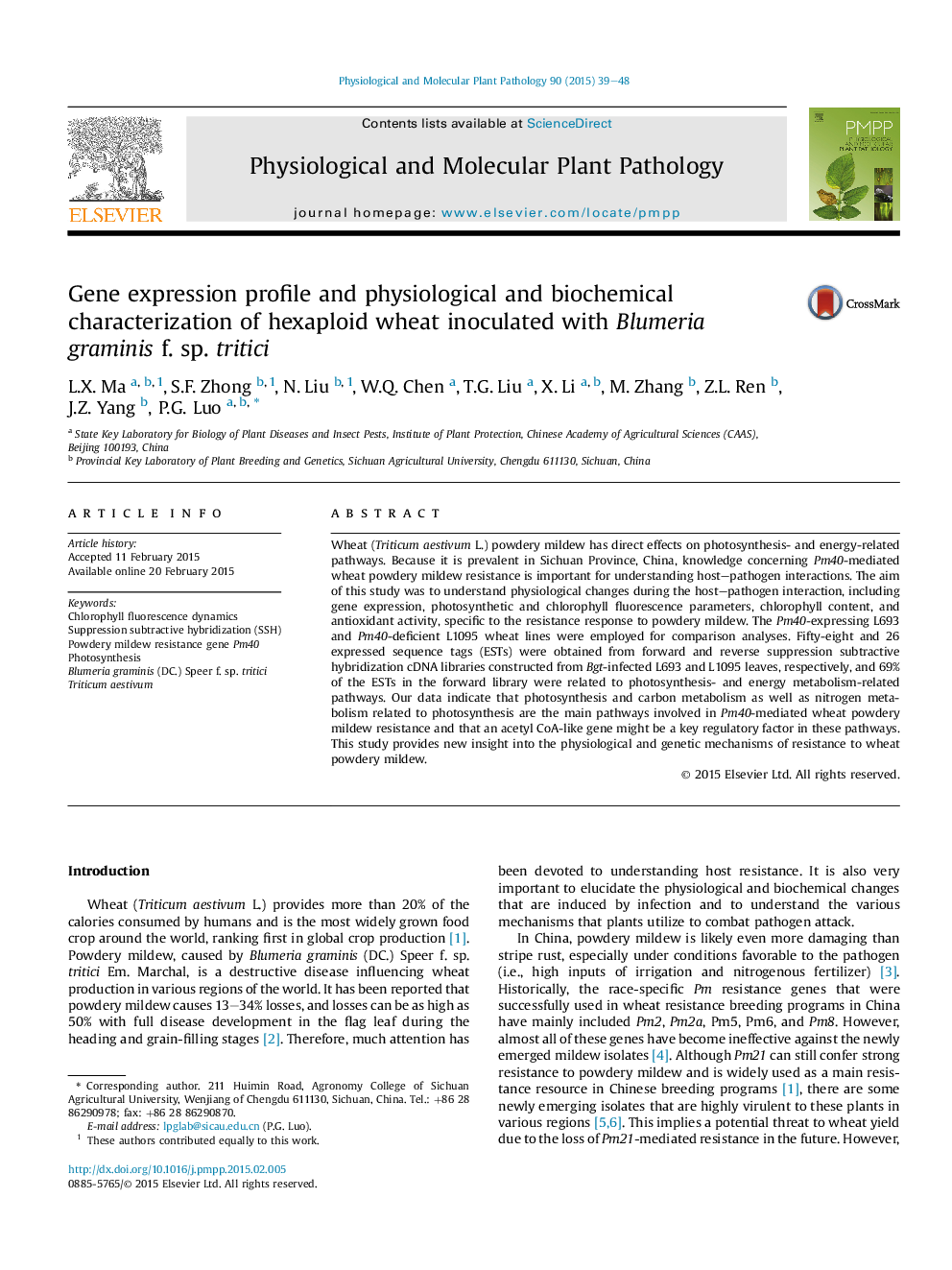| Article ID | Journal | Published Year | Pages | File Type |
|---|---|---|---|---|
| 2836281 | Physiological and Molecular Plant Pathology | 2015 | 10 Pages |
•We tested physiological parameters and gene expression changes after Bgt infection.•We explored the mechanism of Pm40 resistance to powdery mildew.•Photosynthetic and energy metabolism pathways are important for Pm40 function.•The PSII reaction center is an important location for powdery mildew resistance.•An acetyl CoA-like gene is a key regulatory factor in powdery mildew resistance.
Wheat (Triticum aestivum L.) powdery mildew has direct effects on photosynthesis- and energy-related pathways. Because it is prevalent in Sichuan Province, China, knowledge concerning Pm40-mediated wheat powdery mildew resistance is important for understanding host–pathogen interactions. The aim of this study was to understand physiological changes during the host–pathogen interaction, including gene expression, photosynthetic and chlorophyll fluorescence parameters, chlorophyll content, and antioxidant activity, specific to the resistance response to powdery mildew. The Pm40-expressing L693 and Pm40-deficient L1095 wheat lines were employed for comparison analyses. Fifty-eight and 26 expressed sequence tags (ESTs) were obtained from forward and reverse suppression subtractive hybridization cDNA libraries constructed from Bgt-infected L693 and L1095 leaves, respectively, and 69% of the ESTs in the forward library were related to photosynthesis- and energy metabolism-related pathways. Our data indicate that photosynthesis and carbon metabolism as well as nitrogen metabolism related to photosynthesis are the main pathways involved in Pm40-mediated wheat powdery mildew resistance and that an acetyl CoA-like gene might be a key regulatory factor in these pathways. This study provides new insight into the physiological and genetic mechanisms of resistance to wheat powdery mildew.
